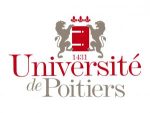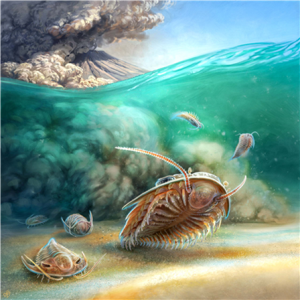 |
 |
Poitiers, 28 June 2024 |
Discovery of a 515-million-year-old marine ‘Pompeii-Like’ in Morocco
A team of researchers from the University of Poitiers publishes an article in Science
Volcanoes located at tectonic plate Boundaries are known for their explosive and large-scale eruptions, capable of generating several tens of km3 of material. These eruptions can almost instaneously entomb the present life, preserving entire civilizations under their ashes, such as those of Santorini and Vesuvius. An international team of researchers, coordinated by Professor Abderrazak El Albani, a researcher at the Institut de Chimie des Milieux et Matériaux de Poitiers (IC2MP – CNRS / Université de Poitiers), has just published in the prestigious American journal “Science”, the discovery of two new species of trilobites in an exceptional state of preservation. These fossilized arthropods, found petrified in their final posture, are representatives of an ecosystem 515 million years old, discovered in volcanic ash levels at Aït Youb, a marine ‘Pompeii like’ in the Souss-Massa region of Morocco. This work was rewarded by being featured on the cover of Science magazine.
Using 3D imaging to reconstruct fossil organisms frozen in volcanic ash
With more than 22,000 species discovered during the Palaeozoic era (-539 to -252 million years ago), trilobites are undoubtedly the best-known fossil invertebrates. While their calcite exoskeleton gives them a high fossilisation potential, making them abundant in the fossil record, their non-mineralised appendages and internal organs are known only from a limited number of specimens.
At Aït Youb, 515 million years ago, during a volcanic eruption, the living organisms were buried by burning clouds. The biological tissues were then consumed by the intense heat, leaving only cavities in the solidified ash: the moulds of the organisms.
Using a non-destructive imaging technique called high-resolution X-ray micro-tomography (XRµCT), the research team was able to study marine fossils in 3D without even extracting them from their host rock. By digitally filling in the voids left by the organisms, they create casts of the extinct bodies in striking detail. This study sheds new light on the anatomical organisation of trilobites, particularly the cephalic part. In particular, it reveals, for the first time in this class of fossil arthropods, the presence of a labrum, a soft mouthpart that acts as an upper lip in modern euarthropods, thereby resolving a debate that has lasted for more than a century.
Professor El Albani commented: ‘This discovery demonstrates the essential role of subaquatic deposits of volcanic ash in the preservation of fossils, and highlights the crucial importance of exploring volcanic submarine environments. It also demonstrates that XRµCT is a powerful tool for observing fossilised objects in very hard rocks in 3D, without the risk of altering them. Thanks to this technique, pyroclastic deposits should become new targets for study, given their exceptional potential for trapping and preserving biological remains, even soft ones, without generating the degradation that usually results in incomplete specimens or even their destruction. This opens up new windows on our planet’s past’. »
Media contacts :
Elodie Auprêtre – Agence MCM – 07 62 19 83 09 – e.aupretre@agence-mcm.com
Abder El Albani – Université de Poitiers – 06 72 85 20 88 – abder.albani@univ-poitiers.fr
Further information




